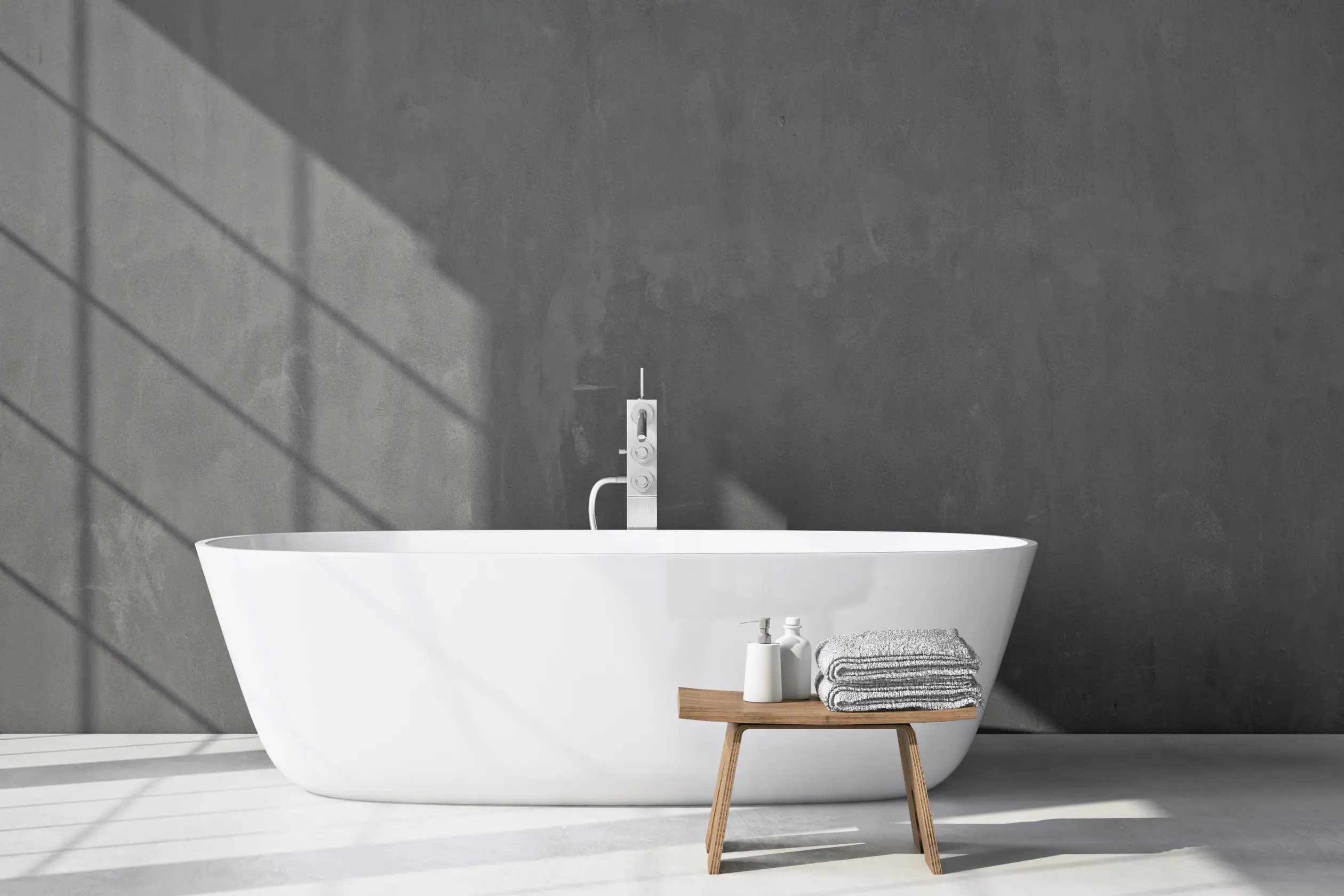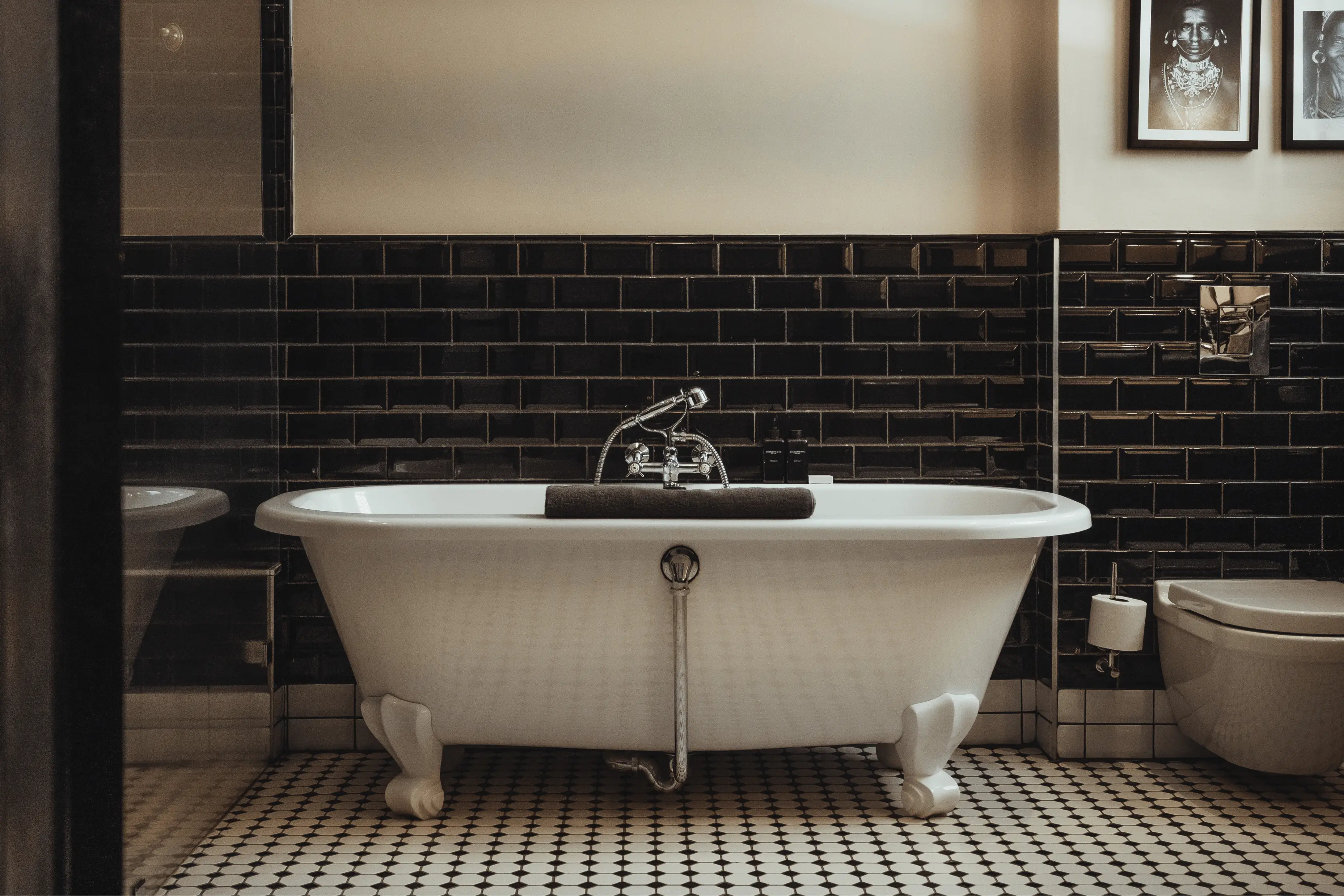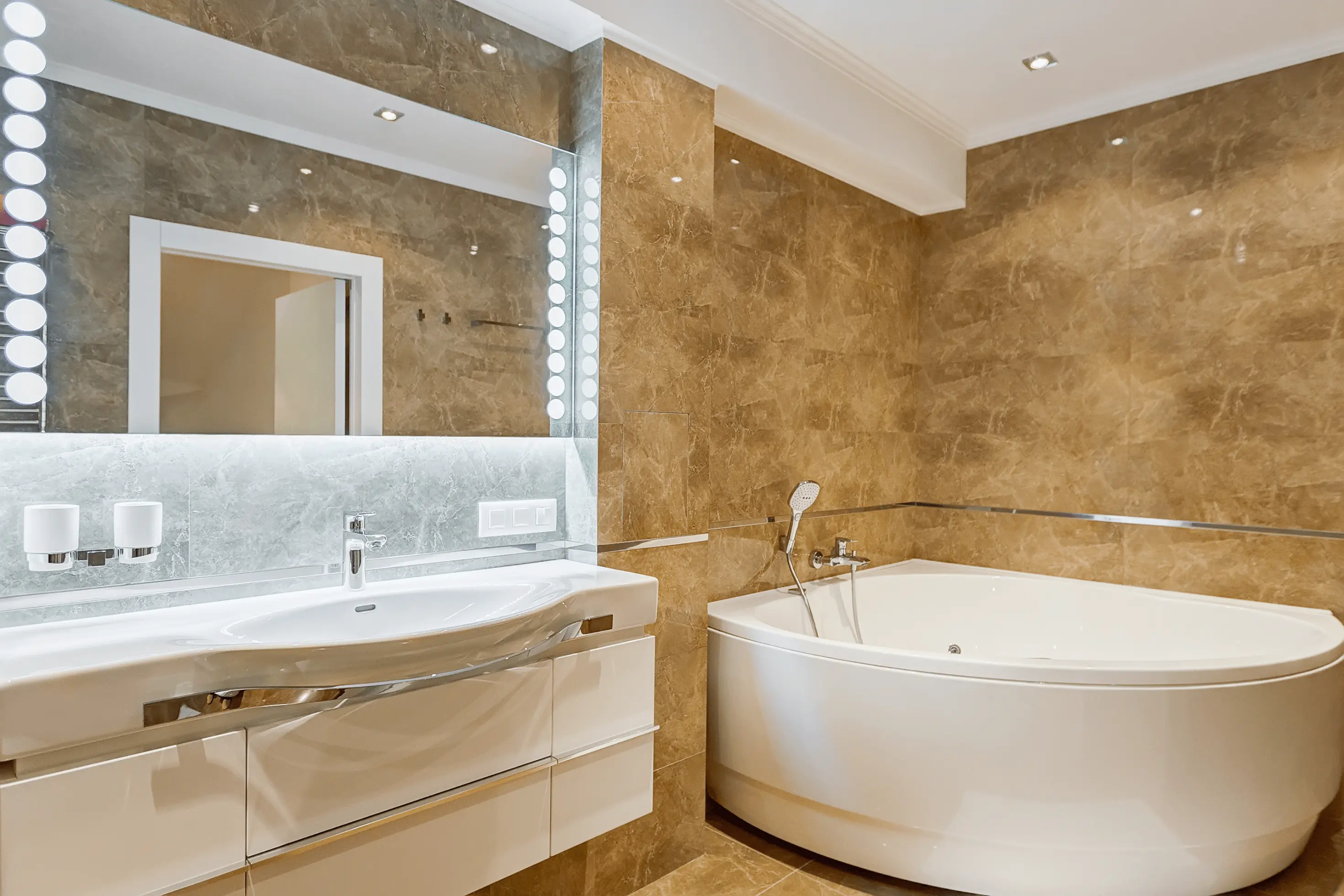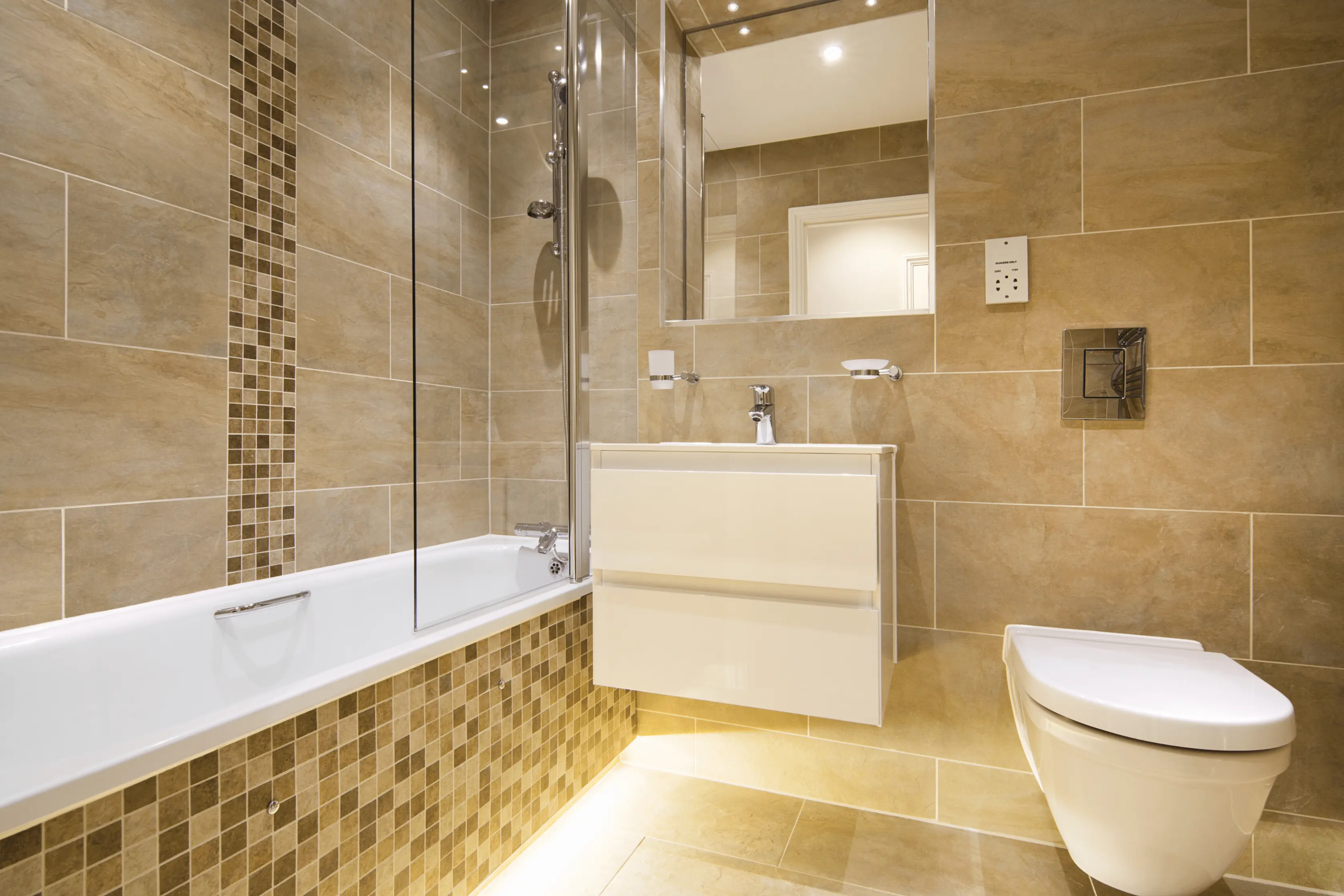The bath you choose impacts how you use the entire bathroom. It defines which is the family bathroom, which is your haven, and which is the not-to-be-touched-by-grubby-kids guest bathroom.
Bath building materials have also advanced a lot since the 70s, 80s, and 90s, so getting advice from Mum and Pop won't be the most reliable.
Today, we'll help you learn what to look for when buying a bath to compliment your lifestyle and needs. (Or your clients’ needs if you're one of our friends from the trade community.)
Jump to the section you need to learn more about how to choose a bath:
- Questions to ask yourself before you choose a bath and bath supplier
- Quick guides to:
- Materials
- Size
- Positioning
- Taps
- Types of baths
- Helpful bath buying FAQs
Questions To Ask Yourself Before Choosing A Bath
Who Will Use My Bath And What For?
Baths come in different sizes and shapes with customisable features for everyone to enjoy. If you are or have loved ones with mobility issues, you’ll need a low bath with a handle or a tub with a door.
Parents of young kids, however, will appreciate thicker ledges to keep the splashes in and the bath at a higher height so bending over doesn’t hurt their back.
Perhaps your bath is destined to be a personal haven. In that case, is it long enough to fully recline, and is there a ledge to keep your candles, a glass of wine, and favourite products on hand?
Create a list of who will use the bath and what features they need to help you narrow your bath options.
How Often Will I Use My Bath And Can I Afford To Replace It?
The materials and styles of baths age and wear differently. You'll want to consider how much wearability you'll sacrifice for your aesthetic and budget needs. If you're concerned about getting your money's worth, check how long your bath's guarantee lasts.
If you’ll be using your bath a lot, consider not just your one-time budget but your maintenance budget, too.
What Installation Limitations Does My Physical Space Have?
Some houses have weak ceilings that can only hold a certain amount of weight. If you have weak ceilings, choose a bath that attaches to the wall and doesn’t have feet, so the weight is distributed evenly through more physical contact points. Also, opt for lightweight steel or acrylic that will significantly reduce the weight of your bath once filled.
Roll top baths and slipper baths can be much wider than straight baths, so even if you have space in your bathroom, they might not fit through the doorway.
Measure your hallways and take a look at your building plans to see your physical limitations on your bath choice.
What Atmosphere Do I Want To Create In My Bathroom?
The tub is usually the focal point of any bathroom as it’s the largest piece in your bathroom suite.
Whatever style bath you choose will impact the rest of your design choices. Corner baths and roll-top baths are both luxurious pieces, yet the former is very traditional, and the latter can have a retro-modern look.
Consider how the shape will impact the light and openness of your bathroom, and the style will guide its overall palette.
Quick Comparison Guides: Bath Features
Which Bath Material Should You Use?
Types of bath building materials:
- Porcelain: Tubs made from porcelain are typically equally expensive and heavy. Their weight and cool touch are fan favourites for creating higher-end bathrooms. Porcelain needs maintaining, however, so you'll need to care for it to stop it from becoming porous and staining.
- Steel: Manufacturers like making traditional roll-top baths and straight baths from enamelled steel because it's lightweight, cheap, and flexible. However, steel is a poor insulator and can warp from your bath heat, so it isn't so cheap for your heating bill and will need you to replace it sooner than other materials.
- Basic Acrylic: Thin and pure acrylic baths are highly affordable and the most lightweight type of bathtub you can find. However, if they don't have a fibreglass coating, they will still last you a good few years but quickly feel cheap and eventually start to wear down.
- Reinforced Acrylic Acrylic tubs can come in extra thick weights reinforced with fibreglass. The fibreglass layer keeps your bathtub lightweight while upping its durability. While sometimes more expensive than steel, reinforced acrylic baths are still a great value option.
- Fibreglass Pure fibreglass baths are cheap, lightweight, and flexible, so they are great for creating unusual-shaped baths. However, they are prone to scratching and fading from natural light over time, so they often look as cheap as they cost.
- Stone Stone baths are pure luxury. They are glorious to lie in and look striking. However, like porcelain, they are cumbersome and need maintenance to avoid becoming porous. They are also inflexible, so they can be hard to install.
Are stone baths better than acrylic? Comparing stone or acrylic is apples to oranges really. Stone baths are luxurious and hold heat for a long time, but they are extremely heavy and often out of people’s budgets. Acrylic baths are better for modern homes with high traffic, tighter budgets, and thinner ceilings.
What thickness of bath is best?Corner bathtubs and straight baths are insulated on one side so they can stand to be thinner in terms of heat retention. 5mm+ acrylic tends to hold heat well and doesn’t leach as much heat straight away from your bath water as stone or steel. Thicker steel and tile meanwhile will insulate your bath well but it will instantly zap your temperature by a few degrees.
What Size Bath Should You Choose?
Are all baths the same size? Most baths sit somewhere between 1400 and 1800mm in length, but can vary wildly in width depending on the shape of the bath.
What size bath you should choose is down to your available space and your personal preference. If you have a bathroom with plenty of space, in theory, you could splash out on a queen-sized bath with two sets of taps (Pretty Woman moment, anyone?). But such a large bath would be unreasonable for your water bill and patience while waiting to fill it up.
Measure your bathroom and consider your other furniture to give yourself an idea of your maximum and minimum size. If it’s an en suite, consider if you need a bath, and if a luxury shower would fit better.
Take your decision on size back to your original requirements. If you want a more comfortable experience, opt for a larger bath. For bathrooms short on space, or if you want a more environmentally friendly bathroom, a small bath starting at 1400 x 695 could be best.
What Position And Shape Bath Should You Choose
The rest of your bathroom can sometimes dictate the position and shape of your bath.
Let's start with the position. Your bath needs to be installed by a water pipe and a waste pipe so the tub can hide the pipes. You may want to position your bath near a window for the view, or away for privacy. Yet, if you want a shower bath, the plug end needs to be against a windowless wall.
If your bath is going against a wall, you'll also need to make sure your bath is left or right-sided so the covering panel can fit on the correct side.
Consider the permanent and moveable attributes of your bathroom to decide what shapes make the best use of space in your bathroom.
What Bath Taps Should You Choose?
The good news:Most baths don’t come with taps, so you can customise your bath to your needs.
The bad news:Now you need to choose bath taps as well as the bath.
Baths tend to come without tap holes, so you can choose to have a single mixer tap, two separate hot and cold taps, or a separate designer tap with its quirky installation requirements.
If you have big plans for your taps, choose the fixtures before your bath to find a model you can install your faucets on.
What Are The Different Types Of Baths?
Single Ended Straight Baths

Straight baths are your typical rectangle baths, attached to the wall by one end and side and feature a bath panel on the external side.
Average size: Straight baths go from small 1400 X 695mm to a large 1800 x 800mm.
Good for:Most bathrooms. You can install a handle on the wall for better mobility, and its even base makes it safer to bathe small children.
Bad for: Making a statement. Straight baths focus on maximising your space rather than creating an interior design splash.
Explore single ended straight baths
Freestanding Floor Baths

Freestanding floor baths are baths that can be placed away from a wall and have a base that sits entirely on the floor of your ensuite or bathroom.
Average size: Freestanding floor baths tend to be similar to straight baths, around 1700 x 750mm and approximately 550mm in height.
Good for: That freestanding look without the bath moving around.
Bad for: Accessibility. Freestanding baths often don't have a handle to help you get in and out and can be tall.
Explore Freestanding Floor Baths
Freestanding Foot Baths

Freestanding baths with feet are baths that you can place anywhere the waste pipe allows and are lifted from the floor by four feet.
Average size: Like their floor sitting counterparts, freestanding baths with feet tend to sit somewhere in the middle points of straight baths, around 1700 x 750mm and around 550mm in height.
Good for: Giving your bathroom that iconic statement look. You know the look.
Bad for: Take more cleaning under the bathtub and can shift around, which causes damage to your pipes.
Corner Baths

Corner baths are tubs that attach to two walls in your bathroom, usually with an equal distance on each side, but they can be asymmetrical.
Average size:Most corner baths are 4 or 5 feet by 4 or 5 feet—more than big enough for two.
Good for: A bathroom you want to spend hours in. Using up a large area of space in one corner of a bathroom.
Bad for: Small bathrooms or very young children, as corner baths can have grooves and uneven bottoms.
Shower Baths

Shower baths can be an all-in-one piece with a built-in glass cover and shower head or a bath attached to the wall with a shower overhead.
Average size:Shower baths are usually the same as straight baths: between 1400 X 695mm and 1800 x 800mm.
Good for:Shower baths are great for family bathrooms with multiple needs to bathe and shower. Or for bathers who need help from a shower head.
Bad for: Some might consider a shower bath a ‘non-luxurious’ option, but we say beauty is in the eye of the beholder.
Double ended baths

Double-ended baths have a plug and overflow in the centre of the tub and space for taps. A double-ended bath can come as a freestanding bath or attached to the wall.
Average size: Double baths are more about where the plug and waste pipes attach, so the size depends on whether you go for a freestanding or straight bath option.
Good for: A bath to share. Or with the perfect choice of tap, a luxurious look.
Bad for: Bathrooms with a limited waste pipe position.
What is the difference between a single and double ended bath?
A single ended bath has the waste point and overflow valve at one end, while a double ended bath has the plug to one side in the centre.
Additional Bath Buying FAQs
Where Can I Buy A Quality Bathtub At A Good Price?
After all of our helpful advice, we hope you won’t mind us plugging (excuse the pun) ourselves here. At Bathroom Takeaway, we value ourselves on great value. Everyday.
We purchase all of our quality products straight from the manufacturer, so we can pass the savings to you. We also offer a 30-day money-back guarantee and a promise. So, you know you can rely on us to keep your bathroom operating smoothly for years.

























